Visitors to the Saratoga National Historical Park in New York may see the Boot Monument, a frieze that commemorates the Battle of Saratoga, one of the most significant wins for the Americans over the British during the Revolutionary War. Specifically, it honors one officer described as the “most brilliant soldier of the Continental Army”. And although it is extremely bizarre, it does not show his likeness or even name the officer in question.
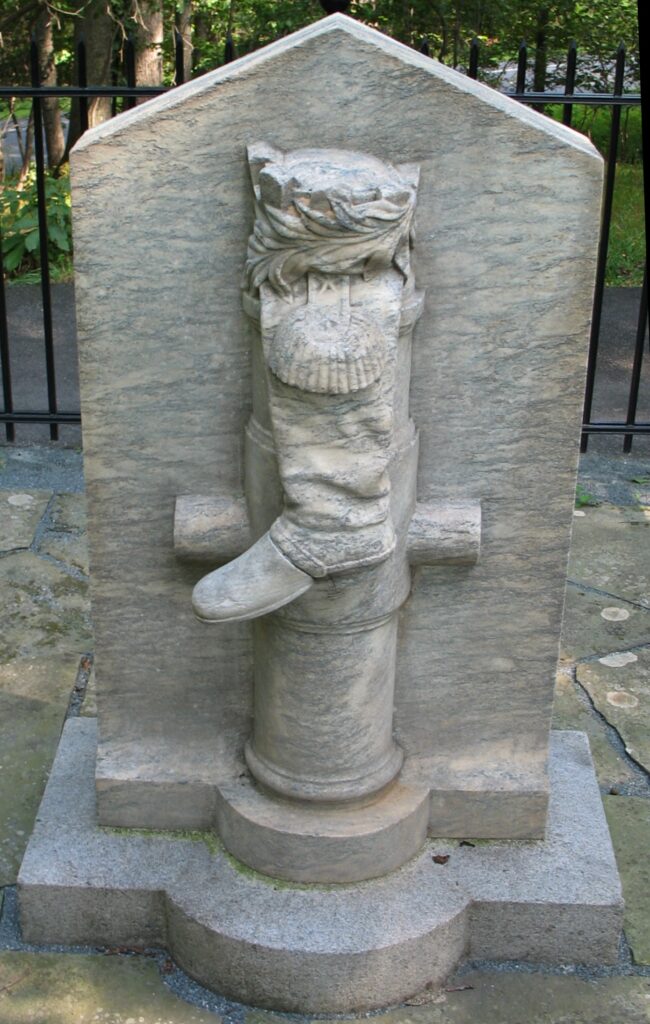
There is a reason for that. The monument is dedicated to Benedict Arnold, a man presented in history classes around the United States as the most notorious traitor in the country’s history.
There is no better exemplification of the conundrum posed by Arnold than the Boot Monument. Before he betrayed his country, he had several victories that were instrumental to the overall success of the Continental Army. However, constant arguments with his peers and being the target of numerous slights and insults, both real and perceived, eventually persuaded him to switch sides and attempt to surrender West Point to the British.
That’s how we ended up with strange things like a memorial that does not name its honoree. People wanted to praise Arnold’s early career but, at the same time, the mere mention of his name revulsed many Americans. And no, in case you were wondering, the monument was not erected before Arnold’s betrayal. In fact, it was built over a hundred years later, at the behest of John Watts de Peyster, himself a Major General during the Civil War.
There is a certain “Jekyll and Hyde” element to Arnold’s legacy and today we are going to try to unravel, as best we can, the tale of the unnamed hero and the despicable villain that was Benedict Arnold.
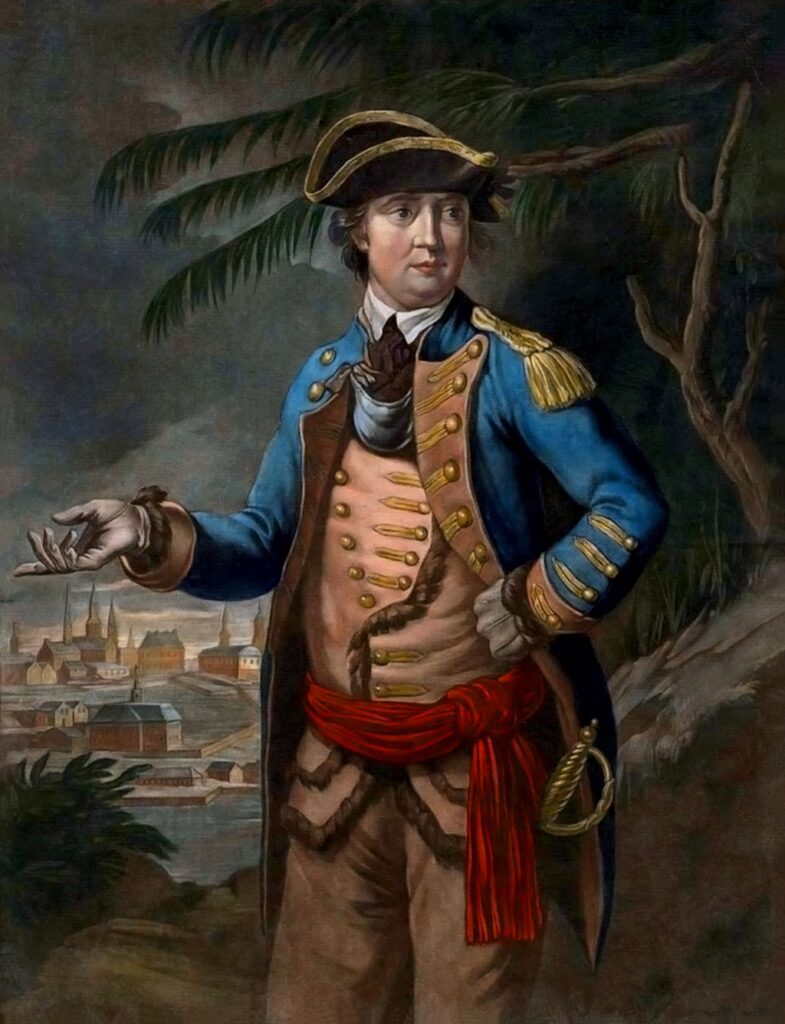
Early Life and Education
Benedict Arnold was born on January 14, 1741, in Norwich, then a part of the Colony of Connecticut. The second of six children, his parents were Benedict Arnold Sr. and Hannah Waterman King. In fact, the younger Arnold was the fourth Benedict in his family, all named after his great-grandfather who served as the Governor of the Colony of Rhode Island and Providence Plantations. On his mother’s side, Arnold was descended from Reverend John Lothropp (sometimes Lathrop), an influential New England clergyman who helped settle the city of Barnstable, Massachusetts, and was one of the first people in the colonies to champion the idea of separation of church and state.
At first, it seemed like Arnold would have an easy ride through life. He was born into a wealthy family and his father was a successful businessman. He went to private school in Canterbury, Connecticut, and was expected to continue his studies at a prestigious university, most likely Yale. However, when he was a teenager, three of his siblings died of Yellow Fever. His father did not take their losses well and started drinking heavily. In turn, this led to multiple failed business deals until, eventually, he lost the family company.
With the money gone, the Arnolds had no choice but to pull young Benedict from school and find him work. His mother appealed to two of her cousins, Daniel and Joshua Lathrop, to take him on as an apprentice to their expanding apothecary business so he could learn the trade. She died a few years later, in 1759, followed by her husband two years after that.
Arnold proved to be an adept merchant. Once his apprenticeship was finished, he borrowed money from his uncles and traveled to Europe to secure goods. He opened his own apothecary in New Haven which proved to be successful. In just a few years, he managed to settle all his family debts. He also married Margaret Mansfield in 1767 and had three children together before her death in 1775.
Early Military Career
Arnold’s military career kicked off almost two decades before the Revolutionary War. As a youth, he wanted to fight in the French and Indian War against his mother’s wishes. Eventually, he managed to join a Connecticut militia but, as far as we can tell, never actually saw combat.
As a successful businessman, Arnold felt the oppressive boot of the British government more and more. The Sugar and Stamp Acts were passed in 1764 and 1765, respectively, to tax the North American colonies. This was an attempt to increase revenue by a government that was hurting financially following the Seven Years’ War, but, unsurprisingly, proved to be wildly unpopular in North America.
Response to the new taxes was almost universally negative, but to varying degrees. Some tried to take the legal route and argued that it was unconstitutional for the government to levy direct taxes since only their representative assemblies could do this. “No taxation without representation” became their rallying slogan. Others resorted to mob violence to deter collectors from doing their jobs.
Meanwhile, Benedict Arnold and many like him simply continued to operate normally, in defiance of the British Government which, technically, turned him into a smuggler. He also joined the Sons of Liberty, a secret organization that sought to protect the interests of colonists against the British Crown.
Outbreak of the War
Arnold’s first position during the Revolutionary War was as a captain with a New Haven militia called the Second Company of Governor’s Foot Guard. When the Battles at Lexington and Concord signaled the start of the conflict, his men were ready to march.
Well…maybe not so fast. The militia was ready to go, but the New Haven town council led by David Wooster had a meeting and decided that they should wait for regular orders. Consequently, they refused to release any gunpowder to the soldiers.
Back then, because gunpowder was so volatile and dangerous, a town’s entire supply was generally kept in one safe place – usually, a magazine or a church basement – and the keys were safeguarded carefully.
Frustrated by the denial, Arnold confronted Wooster in a tavern and demanded the keys, saying that he intended to march even if he had to break into the powder house. The town council relented and, after arming themselves, the militia trooped to Cambridge, Massachusetts.
Image suggestion: Powder House Day celebration
This little moment of glory for Benedict Arnold is well-remembered in New Haven. Since 1904, the city commemorates it every year on April 22 as Powder House Day.
On the Way to Fort Ticonderoga
Arnold’s militia was on its way to take part in the Siege of Boston, but on the way met Colonel Samuel Holden Parsons. The two of them discussed the Continental Army’s desperate need for artillery and brought up the fact that Fort Ticonderoga on Lake Champlain had plenty of cannons guarded only by a small force. They agreed that the fort would be a great asset to them so, while Parsons continued his journey, Arnold went to Cambridge where he persuaded the Massachusetts Committee of Safety to fund his expedition to capture the fort.
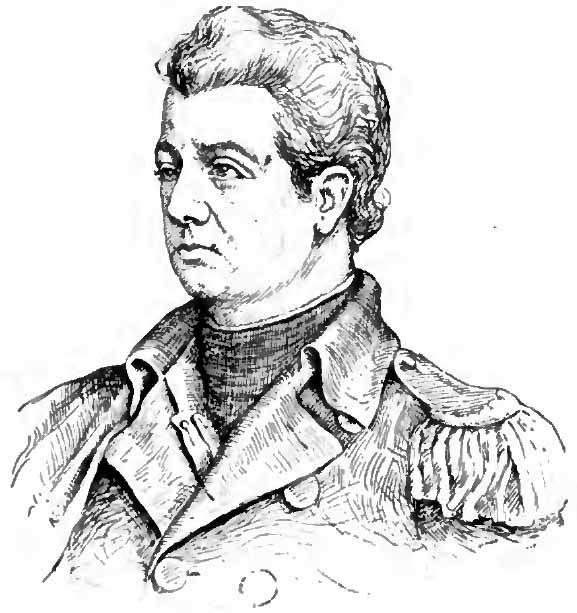
Now we arrive at the first instance where Arnold felt slighted by his own side. He was not the only one planning to attack Fort Ticonderoga. A second militia from the New Hampshire Grants called the Green Mountain Boys were also on route. They were led by Ethan Allen, a man who would go on to be one of the founders of Vermont. Arnold and Allen did not get along and this was the first in a series of rivalries that Benedict would have with fellow officers. Whether or not he was justified in his enmity, we cannot really say with certainty since both sides gave their own versions of the story.
Benedict Arnold had been made a colonel and had official orders to lead the charge on Fort Ticonderoga. This did not mean anything to Allen who refused to relinquish command nor to his Green Mountain Boys who would not obey the orders of any other officer. They knew they had all the leverage because they accounted for the bulk of the military force. Eventually, Arnold had no choice but to concede and accept Ethan Allen as the co-leader of the expedition. Some historians see it as even more insulting to Arnold. They argue that he was only allowed to ride at the front of the military column alongside Allen for pure symbolism and had no actual authority.
We should mention that there was also a third, smaller force led by one Colonel James Easton who got along even worse with Arnold and their relationship eventually descended into violence. According to Arnold’s journal, he took the liberty of “breaking his head” and then challenging Easton to a duel. When the latter refused to relinquish his other weapons and “draw like a gentleman”, Arnold kicked him “very heartily” and told him to leave the point.
Taking the Fort
Despite the animosity between Arnold and his fellow officers, the attack on Fort Ticonderoga was an unmitigated success. During the early hours of May 10, 1775, around 80 soldiers crossed Lake Champlain undetected and snuck into the fort, taking the British garrison by surprise. The militia managed to capture the citadel without any fatalities. From there, the men also took the nearby Fort George and Fort Crown Point which had even fewer soldiers guarding them.
This victory was cause for celebration. According to Arnold’s journal, the Green Mountain Boys broke into the rum supply and drank themselves into a stupor. Meanwhile, his own captains started to show up with additional men. Now that he had a sizable force on his side, Arnold sought to claim some glory for himself.
His target was Fort Saint-Jean on the Canadian side of Lake Champlain. Like the other fortresses, it was poorly guarded, but it also had the HMS Royal George, the only major warship in those waters. It would have been a fitting prize for the ambitious officer who knew that Ethan Allen would try to claim as much credit as possible for the capture of Fort Ticonderoga. Indeed, when he wrote his memoir, Allen neglected to mention Benedict Arnold by name.
A week after taking Ticonderoga, Arnold’s men rowed in small boats called bateaux and reached Fort Saint-Jean undetected. The element of surprise was enough to overpower the small garrison, but Arnold found out that a large British force was on its way from Montreal. The capture of the fort turned into a raid. Arnold and his men took all the supplies they could aboard the Royal George and sunk everything else.
Arnold decided to rechristen the warship as the USS Enterprise. It became the first in a long line of prestigious American ships that carried that name – a tradition which, if Star Trek is to be believed, will continue hundreds of years into the future.
Ethan Allen and his men started to disperse from Fort Ticonderoga and Arnold assumed that he would take command. Instead, Colonel Benjamin Hinman arrived with a large force of 1,000 soldiers and orders from Connecticut Governor Jonathan Trumbull which said that Arnold would serve as his subordinate. Incensed by another perceived injustice, Arnold resigned his commission and headed home. On the way, he learned that his wife had passed away and, shortly after, Arnold himself was struck by gout, a painful disease which would plague him for the rest of his life.
Disaster in Canada
Despite these setbacks, Arnold was not quite ready to give up on the military life just yet. Among others, he was of the opinion that the Continental Army’s next move should be to invade Quebec via their newly-gained foothold on Lake Champlain. This would deny the British a solid base of operations should they want to charge into New York.
Again, Arnold was refused the opportunity to lead the expedition, with that honor going to Major General Philip Schuyler. He turned out to be quite a rarity in that he was a Continental officer that Benedict Arnold actually got along with. However, he was stricken by illness and was forced to relinquish command to Brigadier General Richard Montgomery.
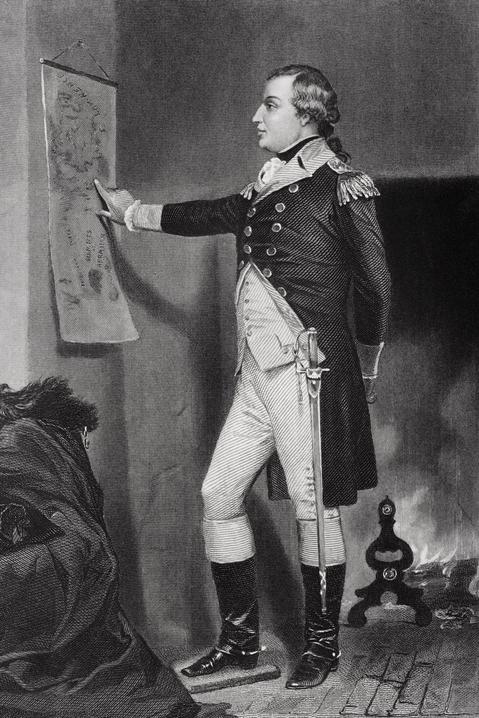
Arnold convinced his superiors that a two-pronged attack would work better. He was given 1,100 men and a colonel’s commission by George Washington himself and told to meet up with Montgomery’s forces and take Quebec City.
There was just one problem. In order for this assault to work, Arnold had to take his troops through the harsh wilderness of Maine and Quebec, over rough terrain, in cold September weather. Almost half of his soldiers died or deserted before they reached their goal. Meanwhile, the British got wind of this planned attack and shored up their defenses.
The six hundred or so soldiers who remained joined up with an equal force commanded by General Montgomery and, on December 31, 1775, attacked Quebec City.
The battle was a disaster for the continental forces. Montgomery died leading the assault. Most of his soldiers were killed, injured, or taken prisoner. The remaining forces fell under the command of Benedict Arnold who sustained a leg injury during the fight.
Instead of retreating, Arnold decided to maintain a siege on the city in the hopes that reinforcements would come. New units did arrive, commanded by David Wooster, the same man who didn’t want to supply Arnold’s militia with gunpowder. He was now a major general and took control of the siege while Arnold traveled to Montreal. As a consolation prize, he found out that he had been promoted to brigadier general for his efforts.
Legal Troubles
Continental forces gave up on Quebec City once British reinforcements were on the way and it became clear that there was no salvaging that disastrous mission. Unsurprisingly, the enemy pressed their advantage and continued on to Montreal to gain back the territory they had lost in Canada.
Arnold spent the rest of the year in Quebec, trying to slow down the advance of the British as much as possible. He distinguished himself in two conflicts: the Battle of the Cedars and the Battle of Valcour Island.
However, because it had been a while since he had an argument with another officer, Arnold brought charges of dereliction of duty against General Moses Hazen. He claimed that the latter refused to take goods from Montreal merchants and send them to supply Arnold’s garrison. This led to a court-martial for Hazen, but his rank, his service, and his connections ensured that he got off. In turn, he pressed counter charges against Arnold and had him court-martialed. Moreover, he was joined by two junior officers who had their own issues with Arnold, John Brown and the aforementioned James Easton.
Unlike Hazen, Arnold was never honorably acquitted of the accusations against him. Instead, General Horatio Gates intervened and dissolved the arrest warrant, believing that the brigadier general was too valuable in battle to lose over legal matters. It certainly sounds like Gates was on the same page as Arnold, but stick around because that will not last long.
Meanwhile, in a rather prophetic move, John Brown was not content with the ruling in Arnold’s favor. He wanted the world to know what kind of man the general was and distributed a pamphlet where he wrote of Benedict Arnold that “money is this man’s God, and to get enough of it he would sacrifice his country”.
Success at Saratoga
We are approaching the crowning achievement of Benedict Arnold’s military career – his service during the Battles of Saratoga. However, it almost never happened because, once again, he wanted to resign his position. Arnold was angered by the fact that several junior officers, some of them his enemies, were promoted to major general ahead of him. It was only due to George Washington’s direct interference that he decided to postpone his resignation and, instead, serve under General Schuyler at Saratoga. Eventually, Continental Congress promoted Arnold to major general, but refused to reinstate his seniority, meaning that those junior officers still remained his superiors.
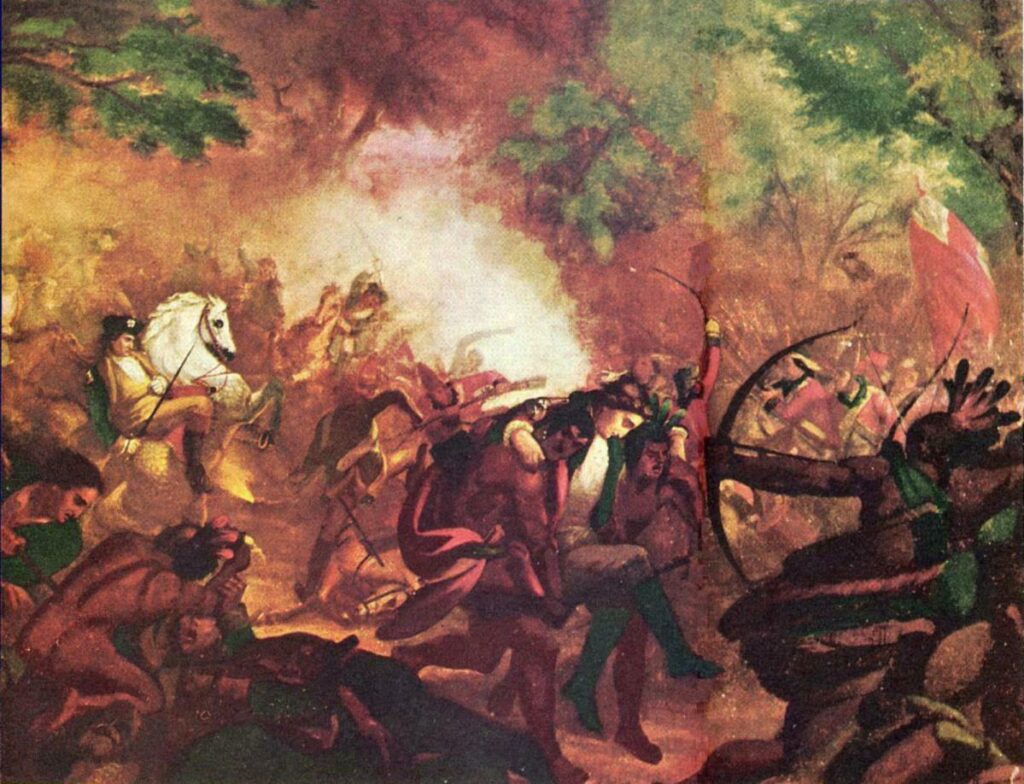
At Saratoga, Arnold found out not only of Congress’ refusal to restore his seniority, but also that Schuyler had been replaced with General Horatio Gates. The general might have defended Arnold during his court-martial, but their relationship soured quickly on the battlefield as they had opposing views on how to approach the military campaign.
The first engagement occurred on September 19 against British forces led by General John Burgoyne. Dubbed the Battle of Freeman’s Farm, it was a pyrrhic victory for the British. They might have won the field, but they suffered greater casualties and failed to weaken the American position.
Most of the success was due to Arnold who wanted to be aggressive and took his regiments to meet the British head-on. However, he felt that he didn’t receive proper credit in the reports written by Gates’s party and began butting heads with the superior officer. One shouting match got so heated that Gates relieved Arnold of command although, for an unclear reason, the latter remained in camp.
This proved instrumental in the second clash at Saratoga known as the Battle of Bemis Heights. According to the conventional story, Arnold ignored Gates’s orders and charged into battle at a critical point, rallied the men and captured a British redoubt. It was also at this point that Arnold was first shot in the leg and then had it crushed by his horse falling on it.
A newly-discovered letter suggests that Arnold had his superior’s permission to engage, but this is besides the point. What matters is that Benedict Arnold ensured a victory for the Continental Army that played a pivotal role in the outcome of the Revolutionary War. A few days later, General Burgoyne surrendered and this was the move that convinced France to enter the war as an ally against the British.
In Charge of Philadelphia
Following the Battles of Saratoga, Arnold took time off active duty to heal his injuries. In June 1778, after the British withdrew from Philadelphia, Washington placed him in command of the city.

His new position provided Arnold ample opportunity to enrich himself through various shady business deals and questionable schemes. This increase in status allowed the major general to meet the Shippens, one of the wealthiest, most influential families in Philadelphia. He fell in love with 18-year-old Peggy Shippen and the two married in April, 1779.
It’s important to remember that, at this point in time, there were still people in the colonies who sympathized with the British government. The Shippens were among them. Now, it’s impossible to say with certainty how influential Peggy was in getting her husband to switch sides, but she definitely exposed him to a new circle of individuals who shared her views. Crucially, among them was British spy chief Major John André. In fact, historians believe that the two of them had a romantic tryst before Peggy married Arnold.
Image: John Andre
Around the same time, the general had been court-martialed for abusing his power in Philadelphia. He was found guilty on two charges of using government transport for personal use and issuing a pass for a ship he had a financial stake in. Arnold received a public chastising from George Washington who wrote that his sense of duty compelled him to decry the general’s actions as “imprudent and improper”. Whether this was the straw that broke the camel’s back or he had already made up his mind by this point, we don’t know. But Arnold had decided to betray his country.
Betrayal at West Point
Major André acted as a middle-man between Benedict Arnold and Henry Clinton, the British Commander-in-Chief in North America. The offer was £20,000 and a general’s commission. In return, Arnold would surrender West Point, a military post on the Hudson River with significant strategic value.
Image: West Point
On August 3, 1780, Arnold assumed command and began weakening the post’s defenses by delaying repairs, draining supplies, and reassigning troops. Communication was slow and dangerous between him and the British so it wasn’t until late September that he met André again.
The plot was exposed on September 23 when the spy was caught by militiamen who found incriminating papers on him that detailed the entire plan. André was taken into custody, but Arnold found out of his arrest in time to flee to British-controlled New York City aboard the HMS Vulture. Peggy managed to join him and the family moved to London following the end of the war. Major André was hanged as a spy.
General Explains His Actions
In early October, Arnold published an open letter titled “To the Inhabitants of America” to explain why he did it. Unsurprisingly, it wasn’t because of his constant fights with other officers, or his illicit dealings, or his wife’s persuasions. It was because of the tyranny and corruption of Congress and the leaders of the Continental Army.
Arnold argued that once the British government sorted out the grievances of Americans, there was no reason why the colonies should not return to the British Empire. He also objected to America’s alliance with Catholic France. As you might expect, public reception to the letter was “unfavorable”, to say the least.
Even though the treasonous plot failed, Arnold was still rewarded handsomely by the British Crown. He was granted pay, pensions for his whole family, and a commission as brigadier general. However, he never distinguished himself in battle for the remainder of the war.
Arnold’s life after his betrayal was, fittingly, bereft of any triumphs. He made several bad business deals in London and Saint John, New Brunswick, and had to deal with multiple lawsuits. His propensity to anger his peers continued on the other side of the pond and, in 1792, Arnold fought a bloodless duel with James Maitland, the Earl of Lauderdale. His gout had gotten worse and affected his good leg. Eventually, he died in a state of delirium in 1801, aged 60, leaving behind an indebted estate.
In the centuries that followed, “Benedict Arnold” became synonymous with “traitor” in the United States, with very few people remembering (or caring, for that matter) about his service in the war prior to his betrayal. The only people still troubled by Arnold are historians who still struggle, to this day, to find the most accurate perspective to look at one of the country’s most controversial figures.



